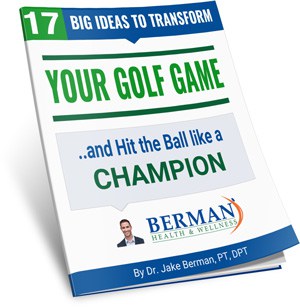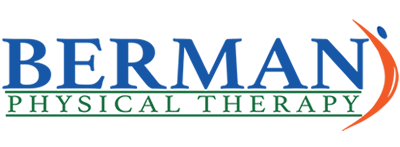
A very quick review of the 4 pillars that contribute to your golf game and the analogy I used relating the 4 pillars to tires on a sports car.
In order for you to get the maximum performance out of that sports car (or lowest score on your scorecard), all of the tires must have optimal air pressure. Assuming that 32 PSI (pound-force per square inch is how tire pressure is measured) is optimal, you can see that you wouldn’t get maximum performance out of the sports car if one tire had 35 PSI, 2 tires had 29 PSI, and the 4th tire had 12 PSI. That car would perform “subpar” at best…BUT if all 4 tires had between 30 and 32 PSI it would be a completely different outcome.
The Four pillars Difficulty
understanding the biomechanics
Before you can fully understand why the Physical pillar has the greatest room for improvement, you must first understand biomechanics and how the body is “supposed” to operate. I will try to stay out of the weeds as much as possible so please bear with me. Once you understand body biomechanics, everything else will become MUCH easier! I’m going to explain the biomechanics (how the body is supposed to move) of the spine and the hips. Also, please don’t hesitate to do a quick Google search to get a better visual of the picture I’m trying to paint here…
THE SPINE IS MADE UP OF 3 SECTIONS:
Cervical
The thoracic spine is the area from the base of your neck to just above your belly button. The main biomechanics of the thoracic spine are to twist left and right with a minor motion into flexion and extension. This is where your “shoulder turn” in the golf swing is supposed to come from.
Thoracic
The thoracic spine is the area from the base of your neck to just above your belly button. The main biomechanics of the thoracic spine are to twist left and right with a minor motion into flexion and extension. This is where your “shoulder turn” in the golf swing is supposed to come from.
Lumbar
And last but not least, the lumbar spine, this is the area from just above your belly button to your tailbone. The biomechanics of the lumbar spine are to flex and extend which allows you to bend forward and backwards. The biomechanics of the lumbar spine do NOT include twisting left and right!
Now let’s briefly talk about the biomechanics of the hips.
The hip joints are ball in socket joints which gives them the ability to move like your shoulders which are also ball in socket joints. This means that your hips can flex, extend, and twist in pretty much all directions.
Please reread those last two paragraphs a few more times so that your really get it because that information is absolutely crucial to understanding why golfers lose so much distance after the age of 60, why back pain is the #1 reason why golfers stop golfing, and most importantly- how the Berman Method can help golfers over the age of 60 INCREASE distance off the tee and resolve back pain.
BLUE LIGHT SPECIAL: The majority of twisting/turning during the golf swing should come from your thoracic spine and your hips! NOT your lumbar spine...
Now let’s go just a little bit deeper into the biomechanics of the thoracic spine as this is where I believe it (your deteriorating golf game) all starts. This is where we must start talking about POSTURE!
Posture is a funny thing in my office. It’s funny because 99% of my clients agree that posture is one of the most important components of a “good golf swing” yet less than 5% of those same people actually do anything to improve their posture (before coming to see me). The thoracic spine is the section of the body that has the greatest effect on improving OR worsening posture. The problem is, like I stated earlier, the thoracic spine’s major function is to twist left and right with a minor function in flexion and extension which can cause it to be difficult to “find” the muscles that actually flex and extend that area. So when people try to stand up in “good posture”, they usually get that upright positioning by extending their lumbar spine because there is more motion available at that section and the muscles performing that movement are generally much stronger than in the thoracic spine.
Try this quick trick to see if you can feel the difference between improving your posture with your thoracic spine vs your lumbar spine. In either sitting or standing, improve your posture as much as you can, getting as straight as possible. Which muscles do you feel working the hardest? Is it your lower or upper back? Chances are you feel it more in the lower back area.
the “2 Finger Drill”
Now let’s try the same thing using the “2 Finger Drill” that I developed to help my clients find the muscles responsible for thoracic extension. Take a finger from one hand and place it in your belly button and take another finger from your other hand and place it on the middle of your chest. 1st pull your belly button in towards your spine as much as you can using your stomach muscles (your core!) while still breathing- don’t push it in with your finger! Keeping your belly button pulled in with your stomach muscles, now try to lift your chest up towards the sky WITHOUT letting your belly button pull back outwards. While maintaining your breath, try to exert high effort in both of these motions and you should start to feel the muscles in the upper middle part of your back starting to “wake up”. Those muscles are the most important muscles required for improving posture (in general excluding outliers).
So for the purposes of making sure we are on the same page moving forward, “good posture” is going to mean thoracic extension or chest up with belly button pulled in towards your spine; and “bad posture” will mean thoracic flexion or chest dropped and belly button relaxed further away from your spine.
Here’s why I believe that poor posture in the thoracic spine is the #1 cause of your deteriorating golf game. Even Though the thoracic spine only flexes and extends a little bit compared to the rest of the spine, when you flex your thoracic spine (bad posture) it actually blocks the biomechanics or ability of the thoracic spine to twist left and right. A flexed thoracic spine is the #1 cause of limited shoulder turn.
Let’s test it. Sitting on a flat hard surface, grab a golf club and place it across the front of your shoulders horizontally holding it in place with your hands on your opposite shoulders. 1st twist your upper body left and right in the bad posture position not allowing your hips/butt to move on the surface you are sitting on. Take note on how far you can twist by looking at a point in the distance off the end of the club in both directions.
Now do the exact opposite. Pull your belly button in as hard as you can while maintaining your breath and raise your chest up to the ceiling. Once in that position, twist left and right again taking note of how far you can get looking down the end of the club in both directions. When done right you should get at least 50% more shoulder turn in your good posture position vs your bad posture position. I personally will get up to 125% more shoulder turn in my good posture position vs my bad posture position!
I said earlier that bad thoracic posture is the #1 cause of a deteriorating golf game. The reason being that with bad posture you are essentially losing 50% of your available shoulder turn. Losing 50% of your shoulder turn directly leads to lost distance from your driver shots. And what’s the 1st thing that 99% of male golfers do when they start to lose distance with the big stick??? Yep you got that right, they try harder! And I’m pretty sure that if you’re reading this you know that trying harder and golf go together like oil and water…more on that later.
What happens next?
The 1st thing that usually happens is due to a lack of thoracic spine twisting (shoulder turn), the golfer will bring the hands and arms back farther into the backswing “wrapping the club around them” in an attempt to gain more “shoulder turn”. This almost always leads to flexing/bending the left elbow and extending/straightening the right knee into the backswing (picture right handed golfers for this example). Remember when I said earlier that poor posture blocks the ability of your thoracic spine to twist left and right? Well a similar thing happens to the hip when you straighten your knee. During the golf swing, straightening your right knee through the backswing blocks your ability to fire your right glutes which inhibits your right hip from twisting/turning (your right hip is supposed to internally rotate during the backswing).
Because your right hip cannot rotate but you are still forcing the twisting motion into the backswing, you’ll ultimately get that motion from the next level up which is… your lumbar spine! Remember those 2 important paragraphs I told you to reread a few times earlier? Is the lumbar spine supposed to twist? NO! And what happens when we force a body part to do something that it’s not supposed to do? Hmmmmm.... Much much more on this to come.
For now, your take home message and quite possibly the most valuable thing you’ll learn today is the 2 Finger Drill from earlier. Practice it over and over again until you can activate and feel those muscles in your upper middle back and then activate those muscles as much throughout the day as you can, especially during your golf swing!

FREE REPORT
How to Transform Your Golf Game
...and hit the ball like a champion


